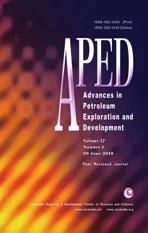A Drilling Liquid to Reduce the Damage Coalbed Methane
2019-08-05DUkun
DU kun
[a]Southwest Drilling Company of Shengli Petroleum Engineering Corporation Limited, Sinopec, China.
Abstract A good protection of coalbed methane reservoir can facilitate its exploitation and usage of, cover the shortage of oil and natural gas supply for China, help cut greenhouse gas emissions, phase down environmental pollution and prevent mine accidents from happening.Firstly, damage mechanisms of coalbed methane reservoir in Qinshui basin of Shanxi province were comprehensively analyzed by X-ray diffraction (XRD), Scanning Electron Microscope (SEM), liner swelling test and hot rolling dispersion experiments, thin-section analysis, mercury penetration analysis, wettability measurement and evaluation of sensitivity. Based on this work, pertinent protection counter- measure study were conducted, the surface wettability modifier SLJ-2 and water sensitivity inhibitor SLYZ-1 were selected out, and then drilling fluid for coalbed methane reservoir in Qinshui basin of Shanxi province composed of 0.4%SLJ-2 + 0.5%SLYZ-1 was developed, which has minimal damage to permeability of ingredient under hygrometric state.
Key words: Drilling liquid; Protection; Surface wettability; Inhibition of water sensitivity
INTRODUCTION
Coalbed methane is the natural gas accumulated in coal bed porosity. Abundant in China, the quantity of coalbed methane in China is ranked as the third around the world, estimated to be 31.46 trillion cubic meters,equivalent to 45 billion standard coal or 35 billion standard oil, which is equivalent to conventional natural gas on land[1~2]. The coalbed methane is developed and stored in coal bed, not like conventional natural gas reservoir which is formed after large scale migration,also different from common sandstone and carbonatite reservoir. The coalbed methane reservoir is high adsorptive and low permeable, easily compacted and crushed[3~5]. In the drilling process, the damage of coalbed is much greater than conventional reservoir because of its inherent properties. Furthermore, the damage in coalbed methane reservoir directly influences the desorption, diffusion and drainage production of coalbed methane[6~8]. Thus it is of importance to study the coalbed methane reservoir damage. Aiming to solve the problems of reservoir protection and wellbore stability in coalbed drilling of Qinshui basin in Shanxi,the coalbed methane reservoir damage mechanism and protection strategy was studied.
1. THE COMPOSITION AND STRUCTURE OF COALBED METHANE RESERVOIR ROCK
The thickness of Shanxi group is 34.00-63.80 m, with the average thickness of 48.90 m, connecting to underling Taiyuan group. The bottom formation is mainly composed of grey, gray and black shale, carbonaceous shale,siltite and sandy shale. There is K7sandstone in bottom formation with thick bed and medium and fine sandstone.The thickness is 0-6.07 m and the average thickness is 1.48 m. 2# and 3# coal seams are mainly developed. The 2# coal bed is the stable pay bed in the whole region. The well depth coalbed methane is 936.2-941.1 m and the apparent thickness is 4.9 m. Quantity calculation indicated that the crozzle content is low to be 5.59%, fixed carbon content is high to be 86.22%, and the gas content is 7.83 m3/t. The poroperm characteristics of the formation are poor. Integrated analysis demonstrated that this formation is of the largest thickness, best characteristics and highest gas content in the well. Otherwise, the shale content is relatively high, mainly composed of carbonaceous shale and cash interlayer. 3# coal seam is local stable pay bed, with medium and fine sandstone and siltite in the upper part, and sandy shale and shale interbed, including unstable 1# coal bed.
2. STUDY ON COALBED METHANE RESERVOIR DAMAGE MECHANISM
2.1 Analysis of Maceral
The rock samples chosen from coalbed methane reservoir was analyzed with D/max-IIIA X diffractometer.
In Table 1, the main component of coal in Qinshui basin of Shanxi is carbon, and others are successively quartz, calcite, clay mineral and pyrite. However, the component contents are significantly different in various samples.
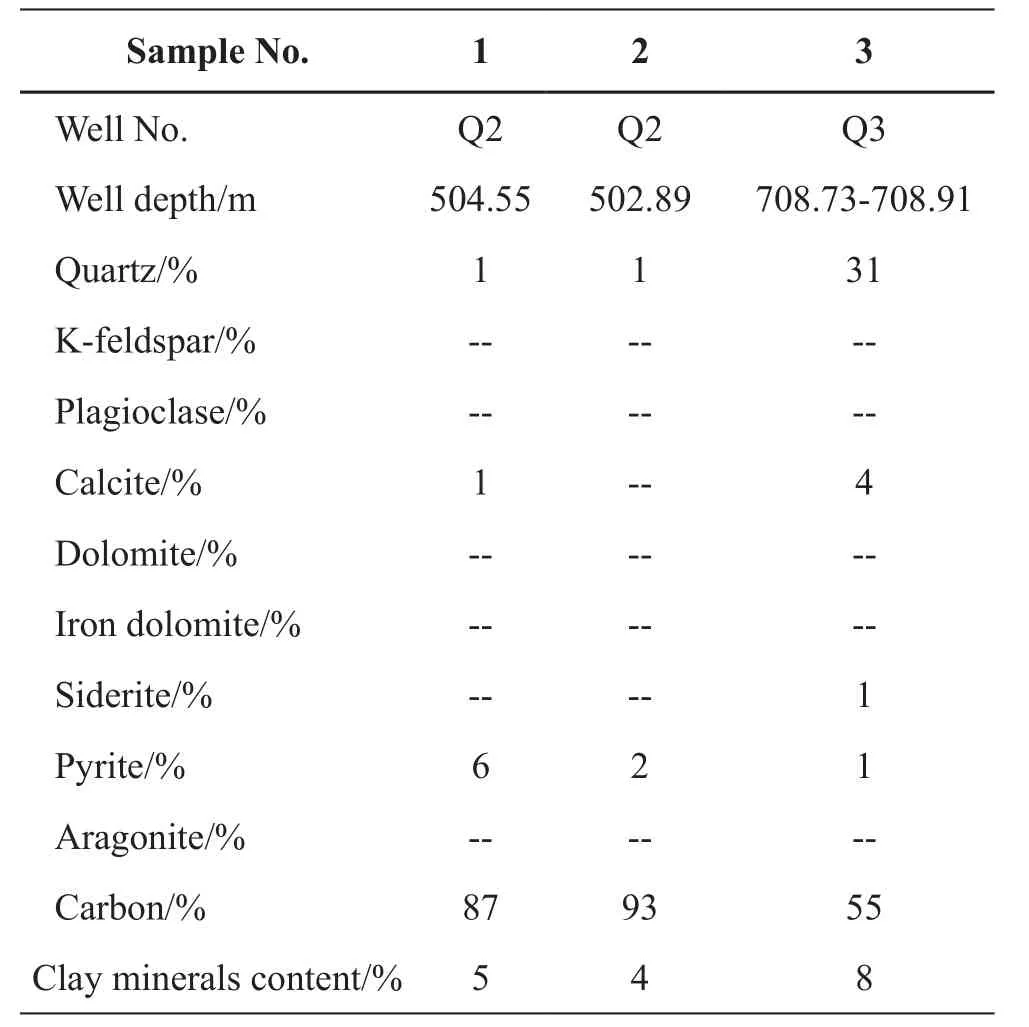
Table 1 XRD Analysis for All Mineral Analysis of Coal Rock

Table 2 XRD Analysis for Clay Mineral Relative Content of Coal Rock
2.2 Coal Physical and Chemical Properties Analysis

Figure 1 Results of hydrate disintegration test of coal rock

Figure 2 Results of hydrate expansion test of coal rock
As shown in Figure 1, the hydration dispersion recoveries of coal in Qinshui basin of Shanxi are above 93%, while the recovery of coal in depth of 708.73-708.91 m of Well Q3 is relatively low.
It can be seen from Figure 2, the low swelling rate of coal in Qinshui basin of Shanxi indicated that the samples are weak/non-hydration. In contrast, the swelling rate of coal in depth of 708.73 -708.91m in well Q3 is high.
2.3 Microstructure and Poroperm Characteristics Analysis
2.3.1 Microstructure Analysis
As shown in Figure 3, for samples from depth of 504.55 m in well Q2, microfractures with preferable stream and mingled with quartz and clay minerals are well developed
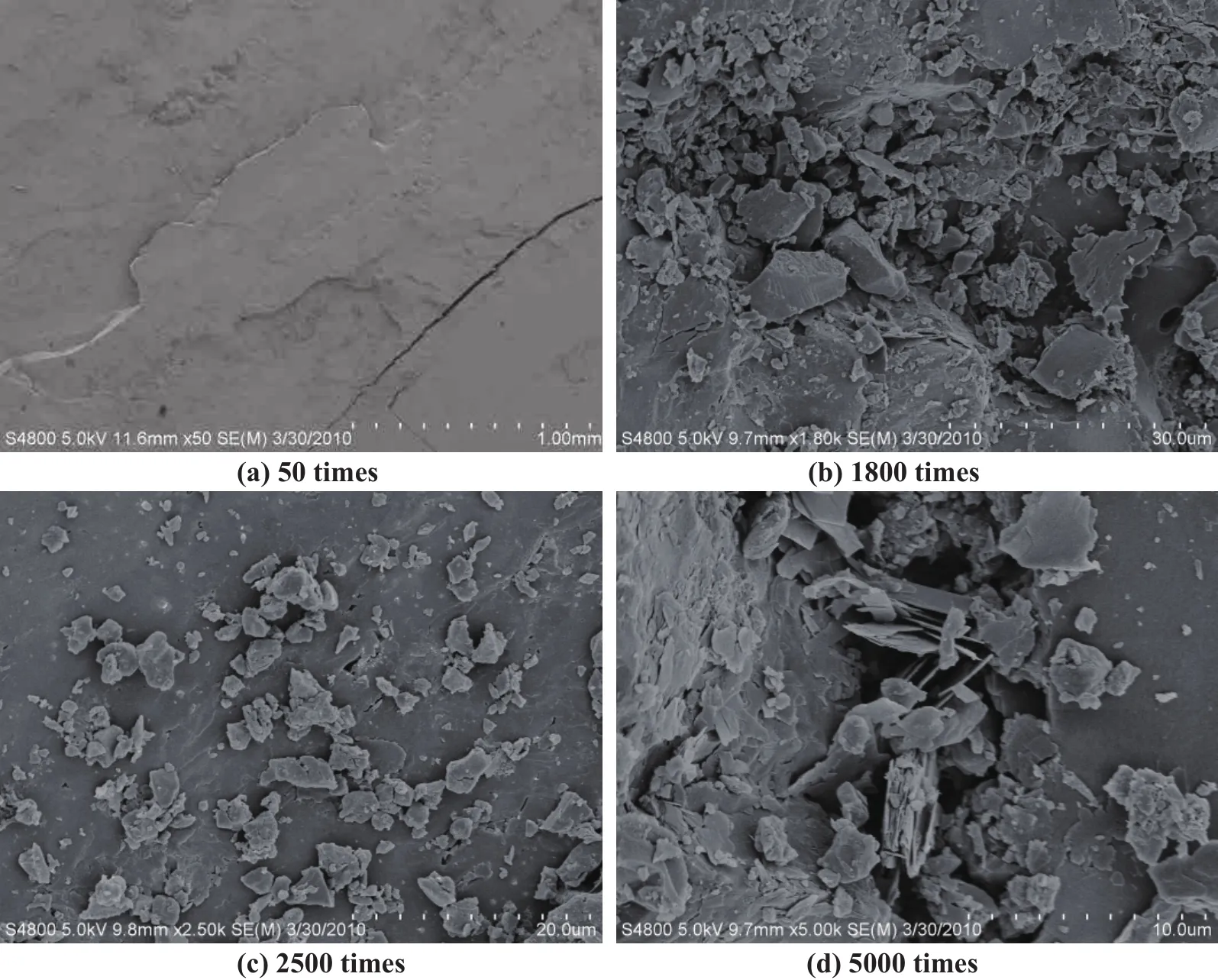
Figure 3 SEM photograph of coal rock from well Q2 504.55m
2.3.2 Poroperm Characteristics Analysis

Figure 4 Optical photograph of coal rock from well Q2502.89m
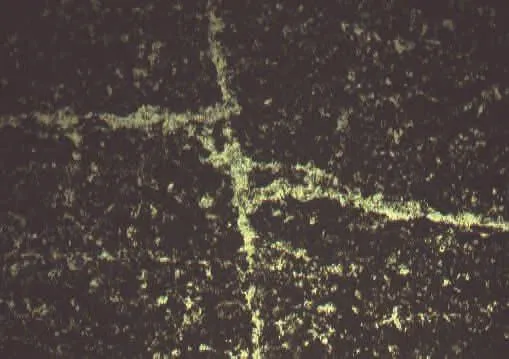
Figure 5 Optical photograph of coal rock from well Q2 504.55m
As shown in Figure 4 and Figure 5, for samples from depth of 502.89 m and 504.55 m in well Q2, there are cleaps for both. Also pits exist in sample from depth of 502.89 m. The cleaps in sample from depth 504.55 m is connected well.
From Figure 6 and Figure 7, the measured parameters of the coal sample from depth of 502.89 m in well Q2are as follows, the porosity is 5.394%, the maximum pore throat radius is 10.4385μm, the average pore and throat radius is 2.3174μm, the maximum hydragyrum saturation is 29.25%and the ejection efficency is 61.778%. The results indicated the coal formation is typical low porosity and fracture type reservoir. The pore diameter contributed to permeability is distributed between 10.43 μm and 2.5 μm.

Figure 6 Mercury injection curve of coal rock from well Q2 502.89m
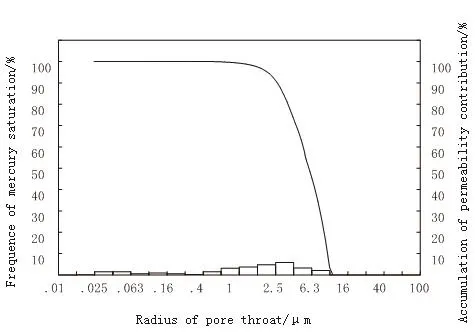
Figure 7 Mercuric saturation histogram and permeability contribution curve of coal rock from well Q2 502.89m
2.4 Wettability Test of Coal Rock
The average contact angle of deionized water and standard saline of coal rock from Well Q2 502.89 are respectively 62.63°and 65.71°. It will tend to be weak hydrophilic, and the wettability of coal rock to deionized water is better than that of standard saline. The reason is that the main point of the test is dull inertinite. In general, contact angle of dull inertinite is less than that of bright vitrinite.
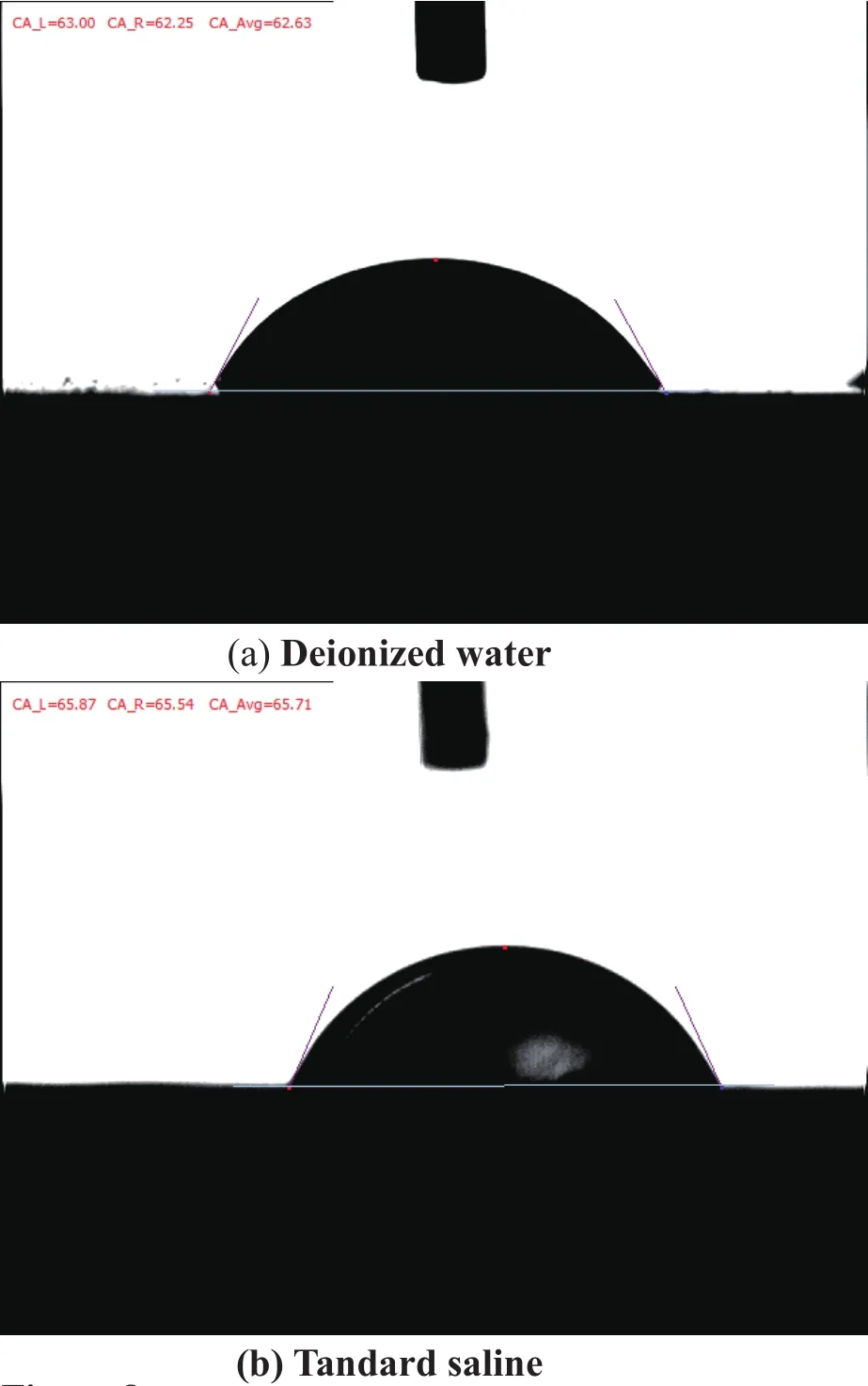
Figure 8 Results of wettability (contact angle) test of coal rock from well Q2 502.89m
2.5 Stress Sensitivity Analysis of Coal Rock
Choose coal rock samples from well Q2 502.89m, maintain a constant displacement pressure, the effect of ambient pressure on permeability of coal rock was researched.The results of figure 9 show that as the ambient pressure increases, that is to say increasing the net stress of coal rock from well Q2 502.89m, the permeability of rock samples has decreased. And with the ambient pressure decreases,permeability recovery is lower than that measured in the process under corresponding to net stress. Which indicate that there is stress sensitivity of coal rock sample.

Figure 9 Effect of ambient pressure to permeability of coal rock from well Q2 502.89m
Through above analyzing synthetically we know that coalbed methane reservoir in Qinshui basin of Shanxi province is typically low porosity and fractured reservoir,The damage mechanism can be summarized as following:it has the potential of water-sensitivity damage because of containing clay minerals and micro-cracks growing; it has the potential of water blocking damage because of weakly hydrophilic of coal rock surface; it has strong stress sensitivity damage.
3 RESEARCH ON PROTECTION MEASURE OF COALBED METHANE RESERVOIR
According to the damage mechanism of coalbed methane reservoir in Qinshui basin of Shanxi province, this paper presents CBM drilling fluid took enhanced inhibition and improved surface wettability measures to protect coalbed methane reservoir.
3.1 Optimization of the Surface Wettability Modifier Agent
Figure 10 shows, after immersed in 0.4%SLJ-2 solutions, the hydrophilicity of coal rock from well Q2 502.89m increases, it express very strong hydrophilicity,significantly lower water lock effect, reduce the damage of coal permeability because of water, which would be beneficial to protect the CBM reservoir.

Figure 10 Results of wettability (contact angle) test of coal rock from well Q2 502.89m (After dipped in 0.4%SLJ-2 solution)
3.2 Optimization of the Water Sensitivity Inhibitor
As figure 10 shows the expansion rate of coal rock from well Q2 502.89m which exposed to fresh water was higher than exposed to 5% SMYZ-1 and 2% SLYZ-1. 5%SMYZ-1 and 2% SLYZ-1 solutions can make coal rock from well Q2 502.89m “contraction”, expansion rate is negative. Relatively speaking, SLYZ-1 inhibition effect of water-sensitive is more prominent.
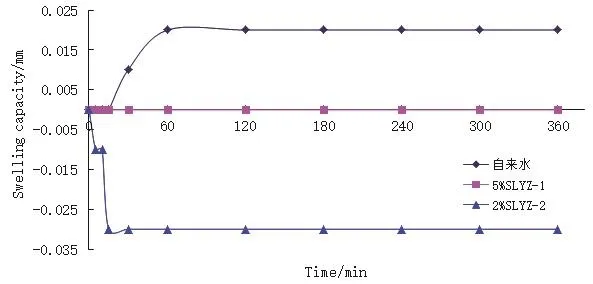
Figure 11 Results of selection of water sensitivity inhibitor
3.3 The Damage Evaluation of External Fluids to CBM Reservoir Permeability
The damage evaluation of external fluids to CBM reservoir permeability has been conducted by the core flow experiment with high purity (99.999%) nitrogen. K0represents the high purity nitrogen permeability before external fluids bad reacted on coal cores, K01represents the high purity nitrogen permeability which nitrogen passed the wet coal cores after external fluids bad reacted on coal cores, K02represents the high purity nitrogen permeability which nitrogen passed the dry coal cores(dried under 60℃) after external fluids bad reacted on coal cores. Sdrepresents loss ratio of permeability; Rdrepresents recovery ratio of permeability of dried core. K0,K01, and K02have been all tested.
(1) Analyze the sensitivity of CBM reservoir coal sample from Shanxi Qinshui Basin to 0.05%XC solution.
(2) Analyze the sensitivity of CBM reservoir coal sample from Shanxi Qinshui Basin to 0.4%SLJ-2 +5%SMYZ-1.
(3) Analyze the sensitivity of CBM reservoir coal sample from Shanxi Qinshui Basin to 0.4%SLJ-2 +2%SLYZ-1.
(4) Analyze the sensitivity of CBM reservoir coal sample from Shanxi Qinshui Basin to 0.4%SLJ-2 +0.5%SLYZ-1.
(5) Analyze the sensitivity of CBM reservoir coal sample from Shanxi Qinshui Basin to deionized water.
As shown in the table 3, external fluids have damaged the core permeability on different degree. Wherein,the damage rate of permeability is 100% for 0.05%XC solution to coal cores, and more than 90% for 0.4%SLJ-2 + 5%SMYZ-1 solution, about 60% for 0.4%SLJ-2 +2%SLYZ-1 solution and deionized water. 0.4%SLJ-2+ 0.5%SLYZ-1 solution has the lowest damage rate to coal cores permeability, and the permeability came out to 124.1%. According to the above result of experiment,0.4%SLJ-2 + 0.5%SLYZ-1 solution was recommended as drilling fluid for drilling CBM reservoir in Shanxi Qinshui Basin.

Table 3 Evaluation Results of Damage of External Fluid to Permeability of Coal Rock
CONCLUSION
• CBM reservoir in Shanxi Qinshui Basin is the typical low porosity and fractured reservoir, the main damage mechanism are as follows: it has potential damage to water-sensitive for containing clay minerals and developed micro fractures; it has potential water blocking damage because of weakly hydrophilic of coal surface; it has strong stress sensitive damage.
• SLJ-2 can improve the surface wettability of CBM reservoirs, SLYZ-1 can inhibit the expansion rate of coal rock; 0.4%SLJ-2 + 0.5%SLYZ-1 solution has the lowest damage rate to wet coal cores’ permeability of CBM reservoir and was recommended recommended as drilling fluid for drilling CBM reservoir in Shanxi Qinshui Basin.
杂志排行
Advances in Petroleum Exploration and Development的其它文章
- Staged Premium Screen Completion Design for Horizontal Well Based on Laboratory Test: A Successful Application in Block 451, Shengli Oil Field
- Simulated Calculation of Bullheading Method When the Well is Empty
- Development of Organic Soil Suitable for Biodiesel-Based Drilling Fluids
- Study on the Affection of Drilling Tools’ Abrasion to the Regular Pattern of Tensile Strength
- Optimization Program for Difficult-to-Produce Reservoir in Bonan Oil Feild
- Producibility Scenario of Unidentified Productive Zone
